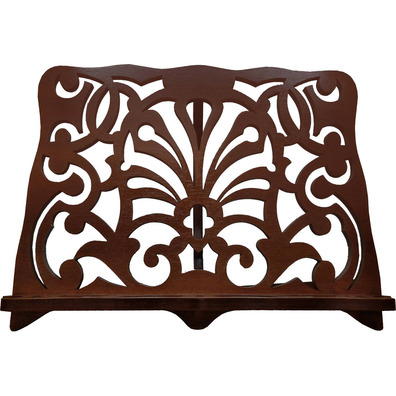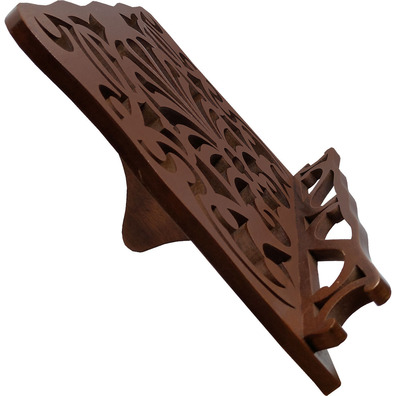Wooden lectern for Catholic Church books
75,00€
Taxes includedCatholic product in stock. Products ready to be shipped. You can check the approximate delivery time during the purchase process.
Wooden lectern for Catholic Church books
- Wooden lectern for parish use.
- Folding stand with:
- 38 cm (14.96 in) wide.
- 24.5 cm (9.65 in) high.
- Lectern with a depth of 17 cm (6.69 in)
- Thickness of 1 cm (0.39 in).
- Stand decorated with filigree.
Wooden lecterns in the Catholic Church
Lecterns are elements of religious furniture that have been used in the Catholic Church since the construction of the primitive Early Christian basilicas.
Lecterns were originally used as stands to hold sacred books or documents, making them easier to read.
Although today there is a wide variety of materials, lecterns have traditionally been made of wood. The use of this raw material is primarily due to several characteristics.
-
The durability of wood
Compared to other materials abundant in the early years of Christianity, wood was a resistant material.
Furniture items made of properly treated wood could be used by several generations of people.
-
The ease of being carved and decorated
The Word of God is a fundamental element during liturgical celebrations. For this reason, lecterns, as stands where sacred texts are placed, occupy a prominent place on the altar table.
Due to their prominent placement, lecterns are often decorated with religious elements related to the Word of God, the Gospels, or other liturgical aspects. It is common to find lecterns adorned with Eagles (symbol of Saint John the Evangelist), the JHS, etc.
Wood allowed the most skilled carpenters and carvers to create beautiful lecterns that reinforced the importance of the Word of the Lord.
-
Ease of assembling structures
Although no wooden lecterns from before the 15th century have been preserved, it is assumed that the complexity of these pieces of furniture increased over the centuries.
It is highly probable that the first wooden lecterns were simple pieces with a rigid structure and hardly any decoration. They were likely objects that could be made from a single piece of wood.
There is evidence that by the Middle Ages, the complexity, and beauty of wooden lecterns had increased significantly. Many of them were true works of art.
Wooden lecterns were made from different pieces that were assembled, allowing for tilting, angle adjustments, etc.
Additionally, to enhance the beauty of the pieces, lecterns were made with different types of wood, giving them varied tones. They also incorporated wood carvings with all kinds of religious figures, etc.






